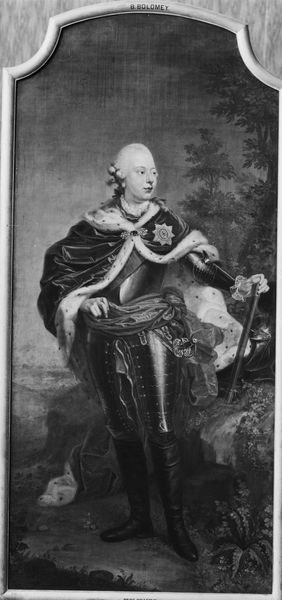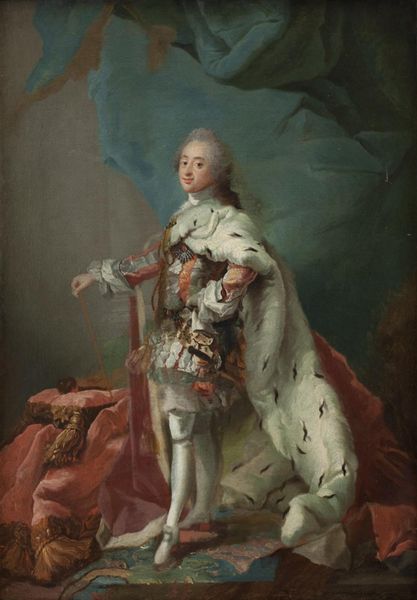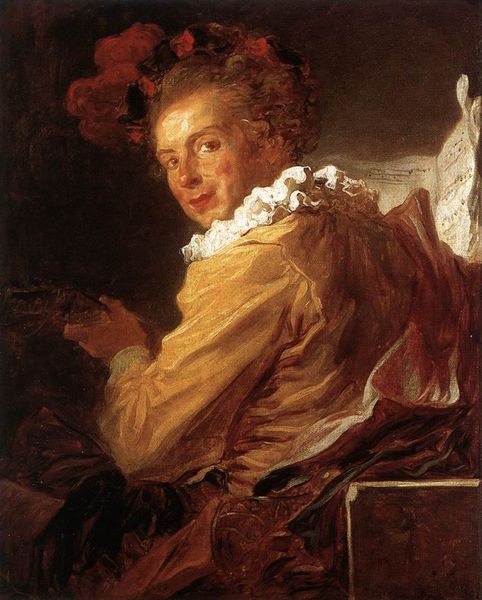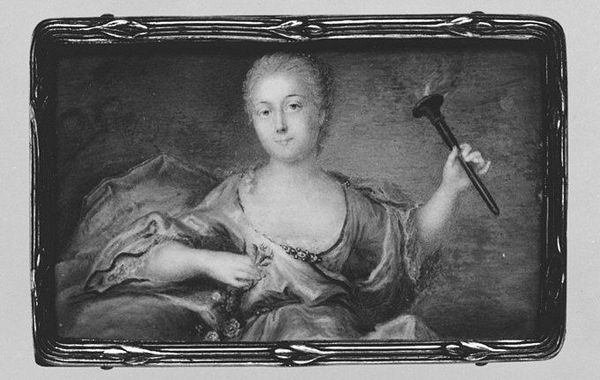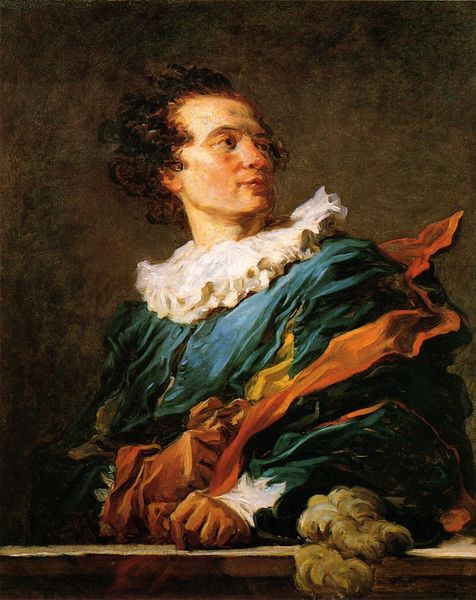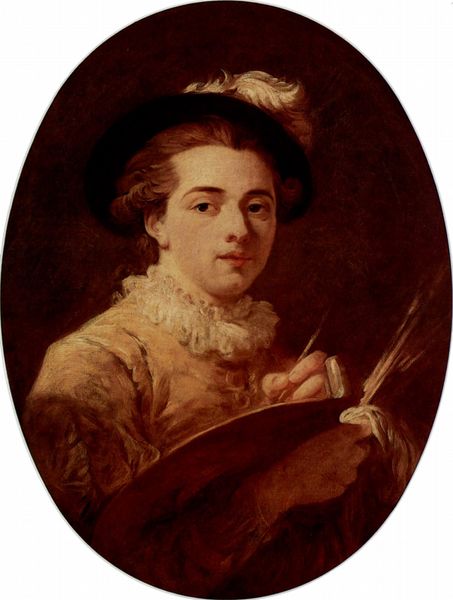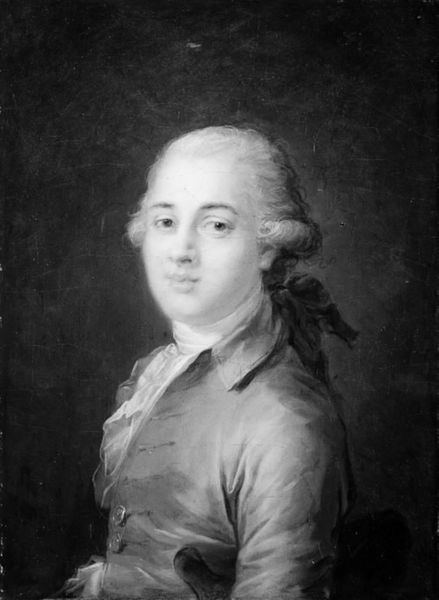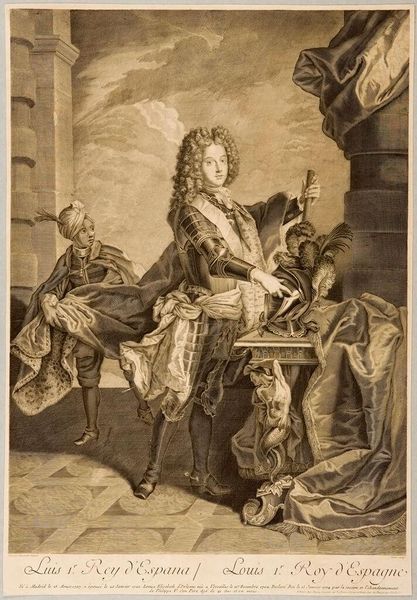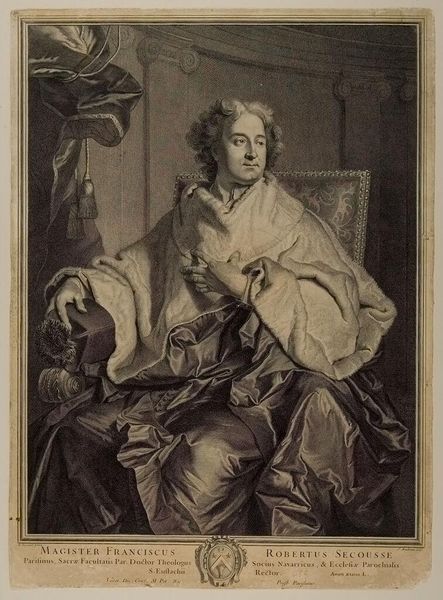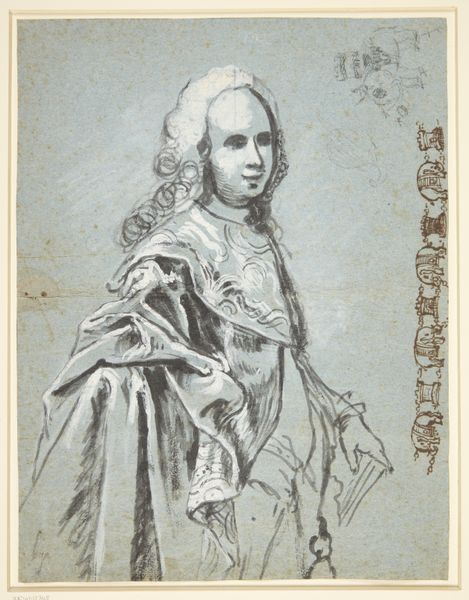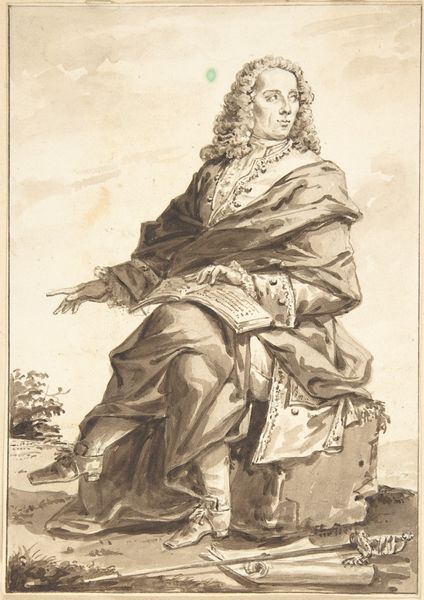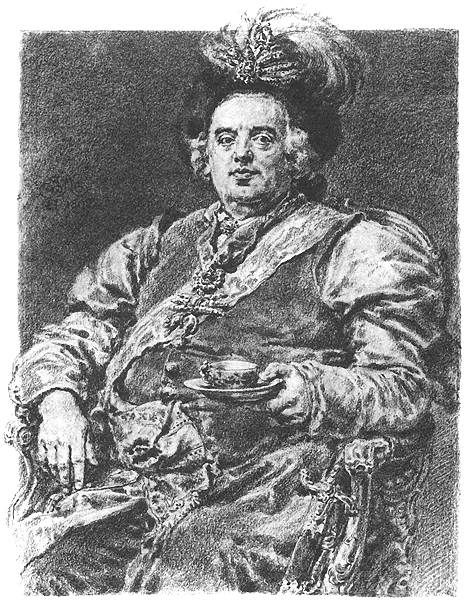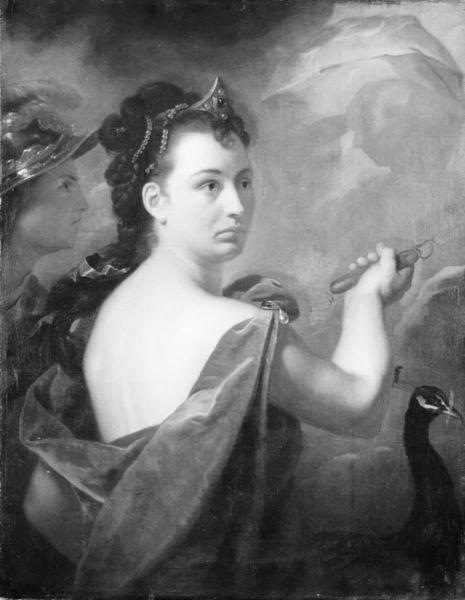
painting, oil-paint
#
portrait
#
baroque
#
rough brush stroke
#
painting
#
oil-paint
#
black and white
#
paint stroke
#
history-painting
#
academic-art
#
monochrome
#
charcoal
#
monochrome
Dimensions: 14.6 cm (height) x 12 cm (width) (Netto)
Curator: I'm immediately drawn to the gestural energy evident in this monochrome work, especially the loose, almost frantic brushwork. It almost feels incomplete, yet potent. Editor: This is a portrait of Frederik V, attributed to C.G. Pilo, created sometime between 1726 and 1793. It resides here at the SMK, Statens Museum for Kunst. It's a fascinating piece reflecting the complexities of royal portraiture at the time, while showing us a society and period that valued this type of depiction. Curator: The way the light catches the armor – it speaks of both the physical demands and also material excess of ruling. I wonder what materials went into its production and what was considered suitable for royal presentation? How much manpower was employed in the extraction, smelting and fabrication of each individual piece? Editor: Absolutely. Consider the institutional context: a royal portrait served to project power and legitimacy, particularly within a courtly environment saturated with political rivalries and social expectations. How the monarchy displayed itself was pivotal in consolidating its power and crafting a public image of royal strength. Curator: It’s fascinating how even in monochrome, the artist conveys a sense of weight and texture. Look at the density of the blacks versus the ethereal washes creating highlights. The very application of oil paint on the canvas becomes a political statement in itself; It's a demonstration of control and skill, but at the service of the Danish court. Editor: Right. It also reflects shifts in artistic conventions. We’re seeing the rise of academic art here, where a refined aesthetic combined with recognizable imagery sought to elevate not just the sitter, but the art form itself. Pilo, by this period, sought to enshrine certain ideas of rulership. Curator: Considering the constraints placed upon its making, by virtue of being royal commission and adhering to period tastes, I do enjoy that some spirit seems to live within. The expressive mark making prevents it from being merely a rote exercise in propaganda. The artist’s hand brings a tension and restlessness that feels surprisingly vital, and that speaks volumes across centuries. Editor: It is interesting to examine that tension between control and expression. Ultimately, studying a portrait like this provides insight not just into a person, but into the broader power structures of the era that shaped both artistic creation and political self-representation.
Comments
No comments
Be the first to comment and join the conversation on the ultimate creative platform.

